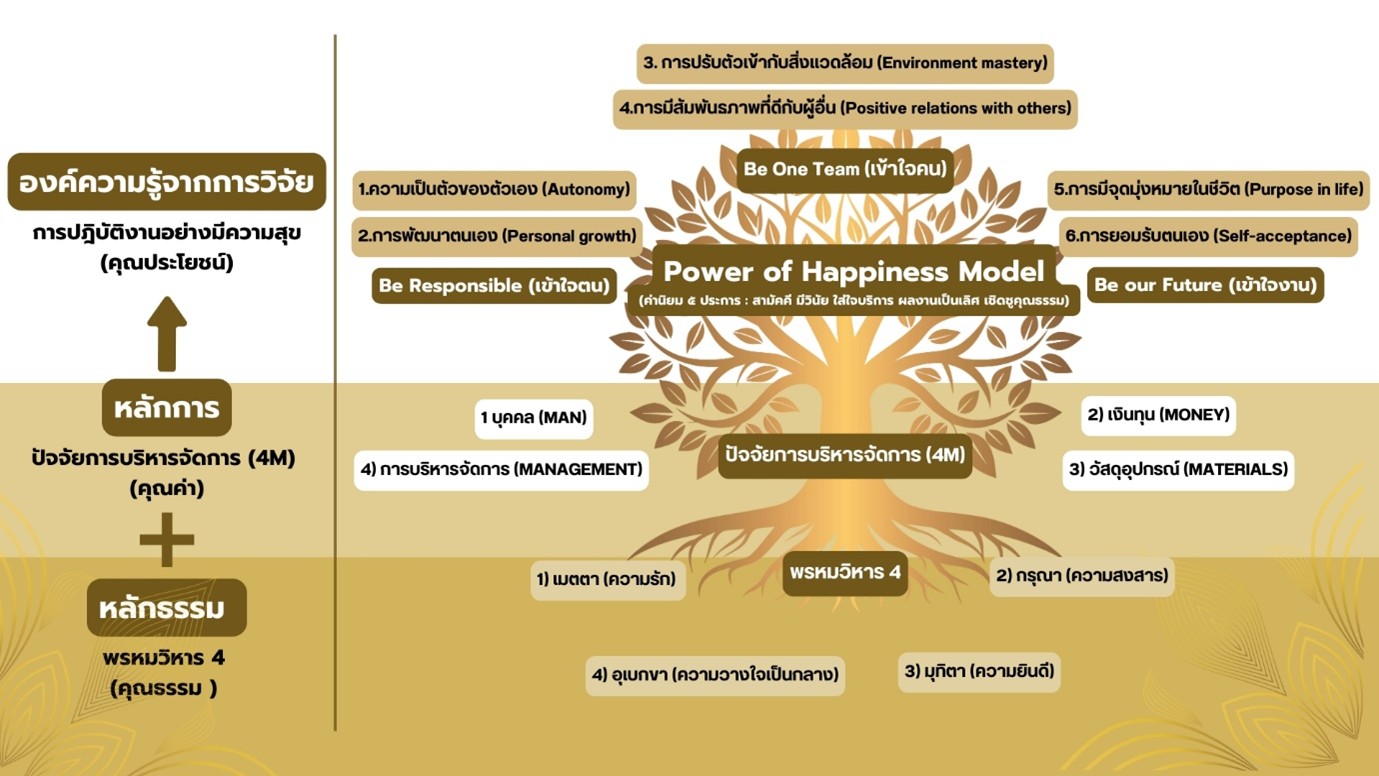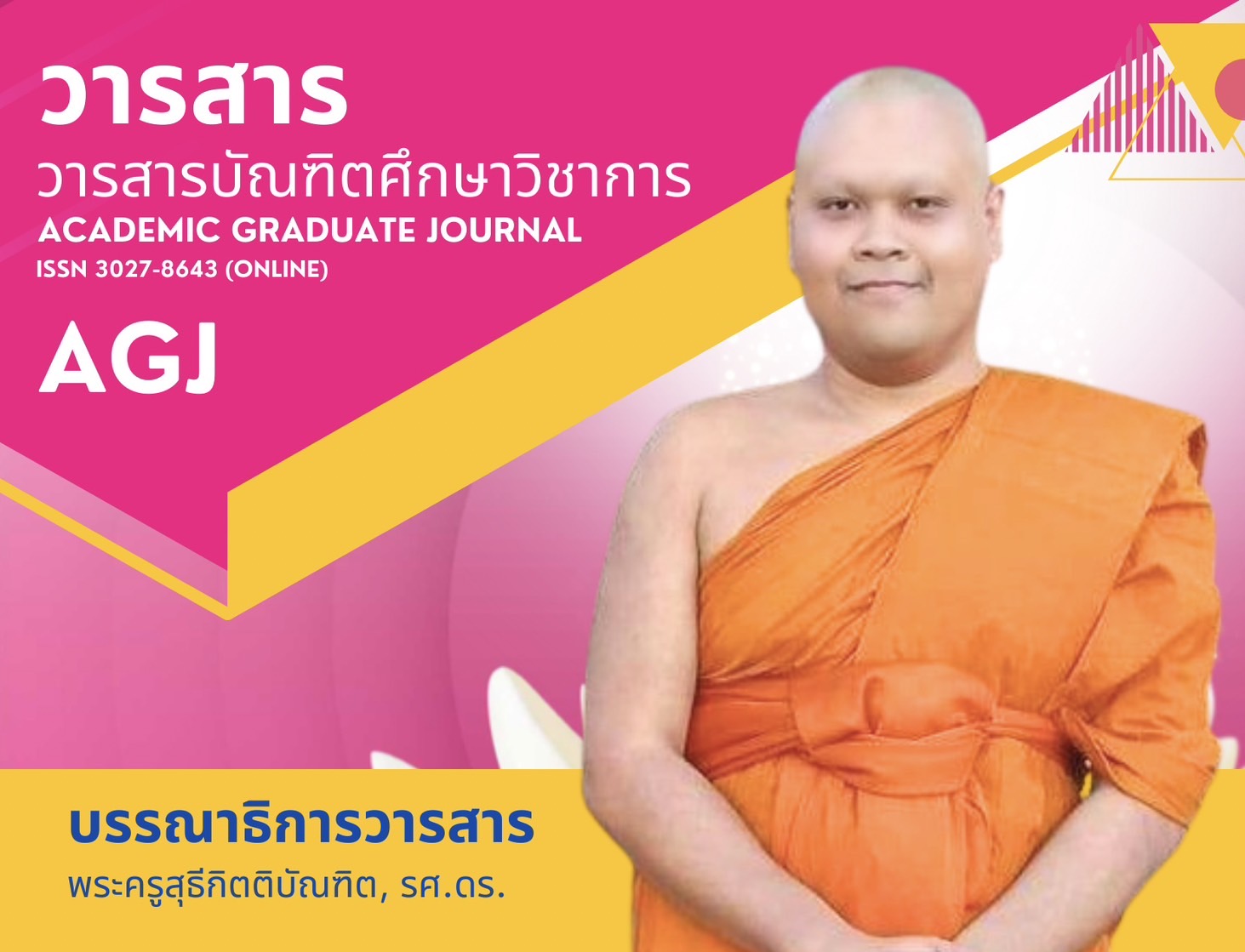BUDDHIST INNOVATION INTEGRATION FOR PROMOTING HAPPY WORK PERFORMANCE OF NURSES AT PHRAMONGKUTKLAO HOSPITAL
Keywords:
Buddhist Innovation, Integration, Happy Work Performance, NursesAbstract
The objectives of this research article were to study 1. The happiness of working, 2. The factors affecting the happiness of working, and 3. To present the integration of Buddhist innovation with the happiness of working nurses at Phramongkutklao Hospital. This research employed mixed methods. The quantitative research used a survey method by collecting field data from a sample of 227 people. The questionnaires comprised 53 items with a total reliability coefficient of 0.917. The qualitative method collected data through in-depth interviews with 18 experts. After that, the data obtained from the research results were used for focus group discussion with 11 experts to confirm the results of the study.
The results of the research were found that 1. The overall level of happiness among nurses at Phramongkutklao Hospital was high (= 3.81). The aspects of happiness were ranked by average score as follows: self-acceptance, positive relations with others, having a purpose in life, personal growth, environment mastery, and autonomy. 2. Factors influencing the happiness of nurses at Phramongkutklao Hospital's work performance found that management factors affect the happiness of nurses at Phramongkutklao Hospital's work performance in 3 elements: money, man, and management, with statistical significance at the 0.01 level, and four divine states of mind in Buddhism affect the happiness of nurses at Mongkutklao Hospital in all 4 aspects, namely, Upekkha (neutrality of mind), Mudita (pleasure), Metta (love), Karuna (compassion), with statistical significance at the 0.01 and 0.05 levels. 3. Buddhist innovation integrated with happy working nurses at Phramongkutklao Hospital found that happy working consists of self-acceptance, mastery, personal growth, positive relations with others, purpose in life, and autonomy. This was achieved by applying the principles of Dhamma, namely the four divine states of mind, to foster a happy work environment, consisting of Metta (love), Karuna (compassion), Mudita (pleasure), Upekkha (neutrality of mind), and the application of principles, namely management factors as a basis for promoting happy work practices, namely man, money, materials and management.
References
กฤษดา แสวงดี และคณะ. (2562). แผนปฏิรูปกำลังคนและภารกิจบริการด้านสุขภาพของกระทรวงสาธารณสุข. กรุงเทพฯ: สำนักพิมพ์สื่อตะวัน จำกัด.
กองการพยาบาล โรงพยาบาลพระมงกุฎเกล้า. (2567). แผนกพยาบาลต่าง ๆ. สืบค้น 9 มีนาคม 2567, จาก https://nurse.pmk.ac.th/index.php/departments.
ณิรดา พราหมณ์ชู. (2563). ความสุขในการปฏิบัติงานของพยาบาลวิชาชีพโรงพยาบาลชุมชนจังหวัดนครศรีธรรมราช. The Journal of Boromarjonani College of Nursing Suphanburi, 3(1), 81-98.
ธีระพล บุญตาระวะ. (2564). การบริหารจัดการทรัพยากรน้ำในพื้นที่จังหวัดปทุมธานี (ดุษฎีนิพนธ์ปรัชญาดุษฎีบัณฑิต สาขาวิชารัฐประศาสนศาสตร์). พระนครศรีอยุธยา: มหาวิทยาลัยมหาจุฬาลงกรณราชวิทยาลัย.
ธัชมน วรรณพิณ และวาสินี วิเศษฤทธิ์. (2555). ความสุขในการทำงานของพยาบาลวิชาชีพ กลุ่มพนักงานมหาวิทยาลัย โรงพยาบาลมหาวิทยาลัยภายใต้กำกับของรัฐ. วารสารวิจัยและนวัตกรรมทางการพยาบาล, 18(1), 9-23.
นฤมล เพ็ญสิริวรรณ. (2563). ปัจจัยที่ส่งผลต่อภาวะผู้นำของผู้บริหารเทศบาลตำบลในจังหวัดนนทบุรี. (ดุษฎีนิพนธ์ปรัชญาดุษฎีบัณฑิต สาขาวิชารัฐประศาสนศาสตร์). พระนครศรีอยุธยา : มหาวิทยาลัยมหาจุฬาลงกรณราชวิทยาลัย.
นันทพร ทองเชื้อ, มิตภาณี พุ่มกล่อม และพงษ์ศักดิ์ รวมชมรัตน. (2565). การบริหารตามหลักพรหมวิหาร 4 ของผู้บริหารสถานศึกษาในสถานศึกษา สังกัดสำนักงานเขตพื้นที่การศึกษาประถมศึกษากาญจนบุรี เขต 1. Journal of Roi Kaensarn Academi, 7(1), 90-102.
ปิยะธิดา ปัญญา และไพศาล วรคำ. (2560). ความสุขในการปฏิบัติงานของบุคลากรมหาวิทยาลัยราชภัฏมหาสารคาม (รายงานการวิจัย). มหาสารคาม: มหาวิทยาลัยราชภัฏมหาสารคาม.
พระธรรมปิฎก (ป.อ. ปยุตโต). (2545). พจนานุกรมพุทธศาสตร์ ฉบับประมวลธรรม (พิมพ์ครั้งที่ 11). กรุงเทพฯ: บริษัท สหมิกธรรม จำกัด.
พระนิพนธ์ ฐานวโร (คำภาสี). (2565). พรหมวิหาร 4 ในฐานะการเจริญภาวนาในคัมภีร์วิสุทธิมรรค. วารสารวิจยวิชาการม 5(3), 15-22.
พัชรินทร์ เขตประทุม และคณะ. (2563). ความขัดแย้งระหว่างงานกับครอบครัวของพยาบาลในโรงพยาบาลเถิน จังหวัดลำปาง. พยาบาลสาร, 47(7), 408-418.
โรงพยาบาลพระมงกุฎเกล้า. (2567). ข้อมูลทั่วไป. สืบค้น 9 มีนาคม 2567, จาก : https://www.pmk.ac.th/.
Hfocus. (2024). ชลน่านชี้วิกฤติพยาบาลไทยขาดแคลนสูง 51,420 คน เร่งผลิต 2 ปีครึ่ง. สืบค้น 28 กุมภาพันธ์ 2567, จาก https://www.hfocus.org/content/2024/02/29813.
Likert, R. (1967). The Method of Constructing and Attitude Scale. Reading in Attitude Theory and Measurement. New York: Wiley & Son.
Sakid. (2023). Work Life Balance คืออะไร ทำไมจึงสำคัญกับการทำงานยุคใหม่. สืบค้น 20 มกราคม 2567, จาก https://www.sakid.app/blog/work-life-balance/
Yamane, T. (1973). Statistic: An Introductory Analysis. (3rd ed.). New York: Harper and Row.







